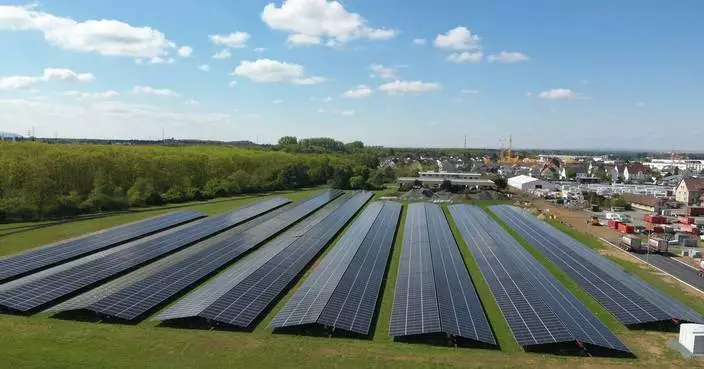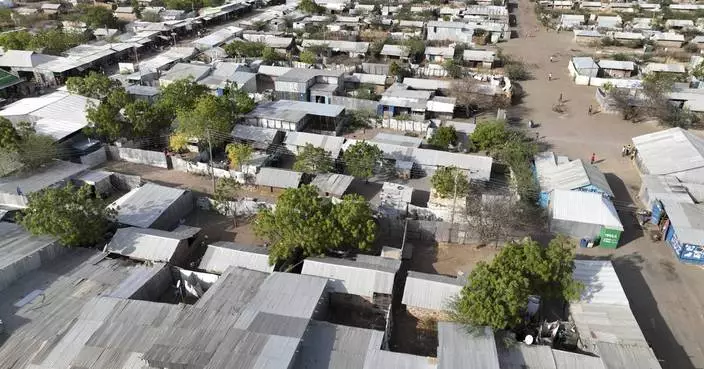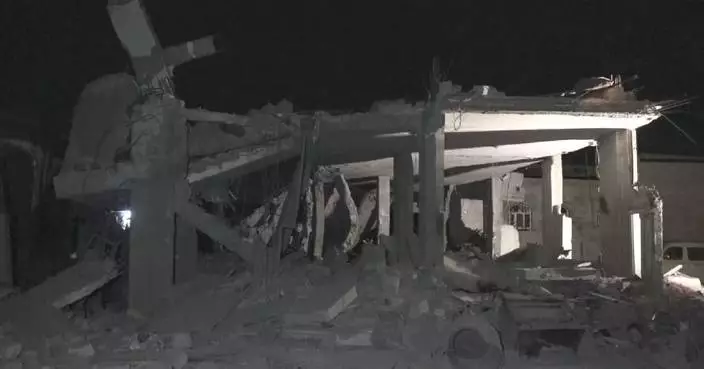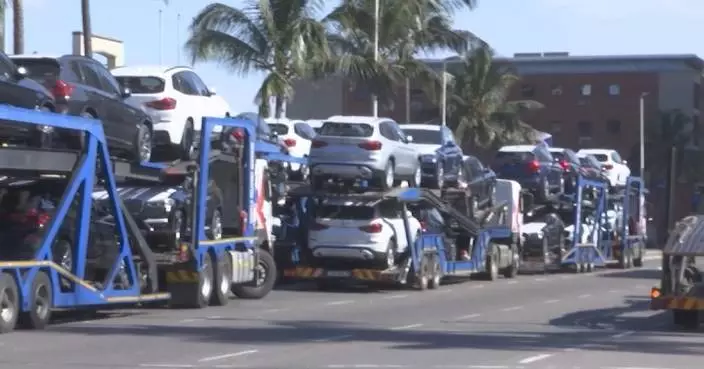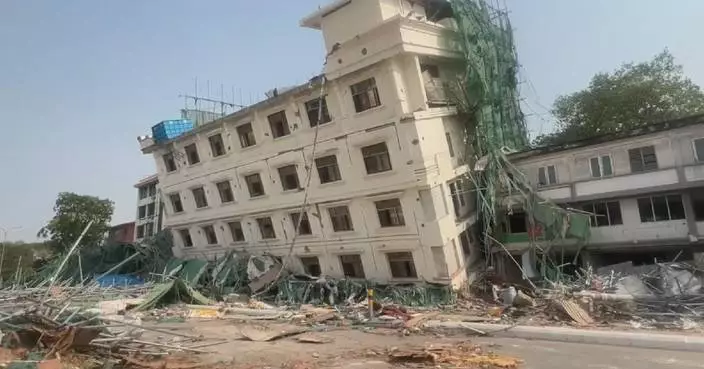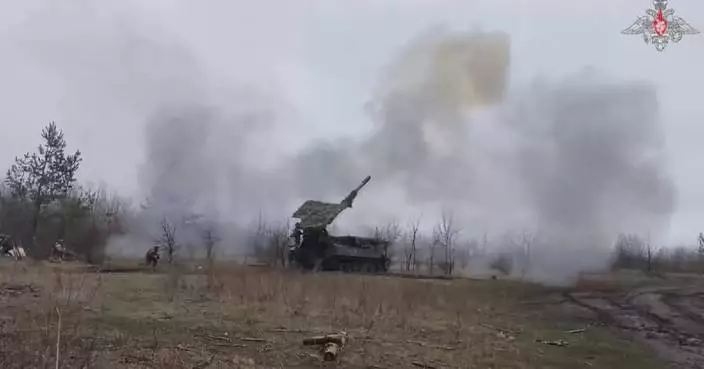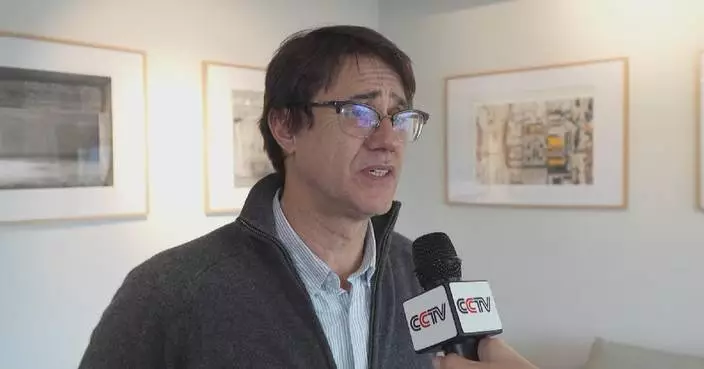KUALA LUMPUR, Malaysia (AP) — A Singapore court on Wednesday granted a stay of execution to a Malaysian man, just hours before he was set to be hanged for drug trafficking, rights activists said, after dozens of supporters held candlelight vigils in both countries to protest capital punishment.
Pannir Selvam Pranthaman was arrested in 2014 for having 52 grams (about 1.8 ounces) of heroin and sentenced to death in 2017. He is due to be hanged on Thursday, making him the fourth person to be put to death in the Southeast Asian country this year after two others were executed for drug-related crimes and one for murder.
Click to Gallery
Activists hold placards during a vigil against the impending execution of Malaysian national Pannir Selvam Pranthaman, sentenced to death for trafficking heroin into Singapore, outside the Singaporean embassy in Kuala Lumpur, Malaysia, Wednesday, Feb. 19, 2025. (AP Photo/Vincent Thian)
An activist holds a candle and a placard during a vigil against the impending execution of Malaysian national Pannir Selvam Pranthaman, sentenced to death for trafficking heroin into Singapore, outside the Singaporean embassy in Kuala Lumpur, Malaysia, Wednesday, Feb. 19, 2025. (AP Photo/Vincent Thian)
An activist holds a cross and a placard during a vigil against the impending execution of Malaysian national Pannir Selvam Pranthaman, sentenced to death for trafficking heroin into Singapore, outside the Singaporean embassy in Kuala Lumpur, Malaysia, Wednesday, Feb. 19, 2025. (AP Photo/Vincent Thian)
An activist holds a candle and a placard during a vigil against the impending execution of Malaysian national Pannir Selvam Pranthaman, sentenced to death for trafficking heroin into Singapore, outside the Singaporean embassy in Kuala Lumpur, Malaysia, Wednesday, Feb. 19, 2025. (AP Photo/Vincent Thian)
Activists holds a cross and a placard during a vigil against the impending execution of Malaysian national Pannir Selvam Pranthaman, sentenced to death for trafficking heroin into Singapore, outside the Singaporean embassy in Kuala Lumpur, Malaysia, Wednesday, Feb. 19, 2025. (AP Photo/Vincent Thian)
Singapore anti-death penalty activist Kirsten Han said the Appeals Court allowed the stay of execution on the grounds that there is an ongoing constitutional challenge by other death row prisoners to a section under the drug law. Although Pannir is not involved, he has said in his plea the case could potentially impact his conviction.
Another factor for the stay is Pannir's complaint to the Law Society of Singapore against his former lawyer, where he is the main witness, Han said. The court in its judgement allowed his bid to mount another appeal against his conviction.
“This is a huge relief and very good news, but a stay of execution is not a complete stop,” said Han. "What Singapore needs now is an immediate moratorium on the use of the death penalty, with a view to full abolition. Pannir lives tomorrow, but as Singaporeans we must keep fighting to make sure no one is killed in our names ever again.”
Singapore’s strict laws mandate the death penalty for anyone caught carrying more than 15 grams of heroin and 500 grams of cannabis. However, critics say the law only targets low-level traffickers and couriers.
Pannir's family, his lawyers and various rights groups noted that the Singapore court had found that he was merely a courier transporting the substance. The 36-year-old has said he didn't know he was carrying drugs. Still, the court had to hand down the death sentence after prosecutors refused to issue Pannir a certificate of substantive assistance, vouching that he helped their investigation, which would have spared him the noose, they said.
Malaysian lawmakers called on their government to intervene to halt Pannir's execution and have him extradited to facilitate further investigation. The Malaysian government, which recently scrapped the mandatory death penalty, didn't respond to media queries.
“We oppose the use of the death penalty on drug mules who are themselves victims in the million-dollar transactions by syndicates that are roaming free,” Malaysian lawmaker Ram Karpal Singh was quoted as saying by The Star newspaper.
Pannir's last-minute reprieve was hailed by dozens of supporters attending a candlelight vigil at a park in Singapore. Holding placards and torchlights, they chanted “Justice for Pannir” and “Execution is not the solution.” Dozens others gathered outside the Singapore High Commission in Kuala Lumpur for a similar vigil, singing songs and reading excerpts of poems and letters written by Pannir.
Pannir, the third of six children, is the son of a church pastor who worked as a lorry driver to make ends meet, said another Singapore activist Kokila Annamalai. He loves music and played in the church band growing up, she said.
In prison, Pannir has penned letters, songs and poems about the anguish of being on death row and hopes of a second chance, she said. His family has shared some of his songs, which were sung by several Malaysian singers.

Activists hold placards during a vigil against the impending execution of Malaysian national Pannir Selvam Pranthaman, sentenced to death for trafficking heroin into Singapore, outside the Singaporean embassy in Kuala Lumpur, Malaysia, Wednesday, Feb. 19, 2025. (AP Photo/Vincent Thian)
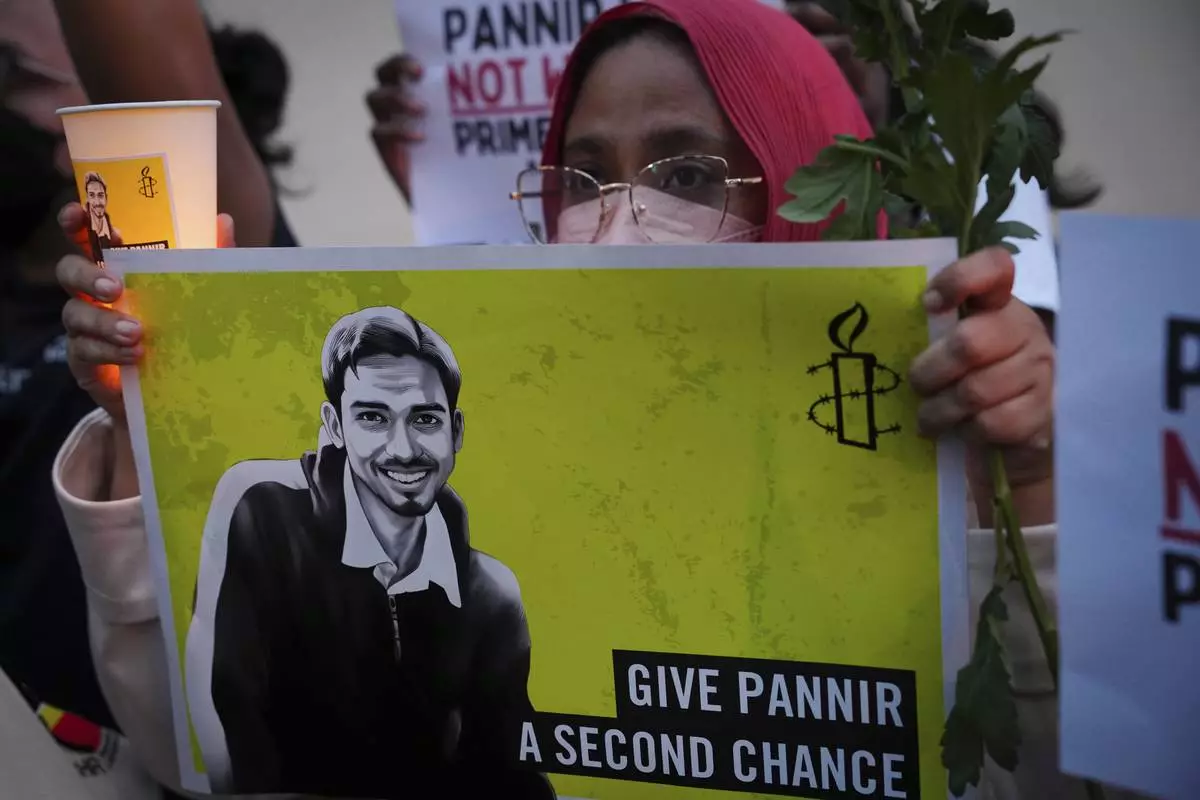
An activist holds a candle and a placard during a vigil against the impending execution of Malaysian national Pannir Selvam Pranthaman, sentenced to death for trafficking heroin into Singapore, outside the Singaporean embassy in Kuala Lumpur, Malaysia, Wednesday, Feb. 19, 2025. (AP Photo/Vincent Thian)

An activist holds a cross and a placard during a vigil against the impending execution of Malaysian national Pannir Selvam Pranthaman, sentenced to death for trafficking heroin into Singapore, outside the Singaporean embassy in Kuala Lumpur, Malaysia, Wednesday, Feb. 19, 2025. (AP Photo/Vincent Thian)
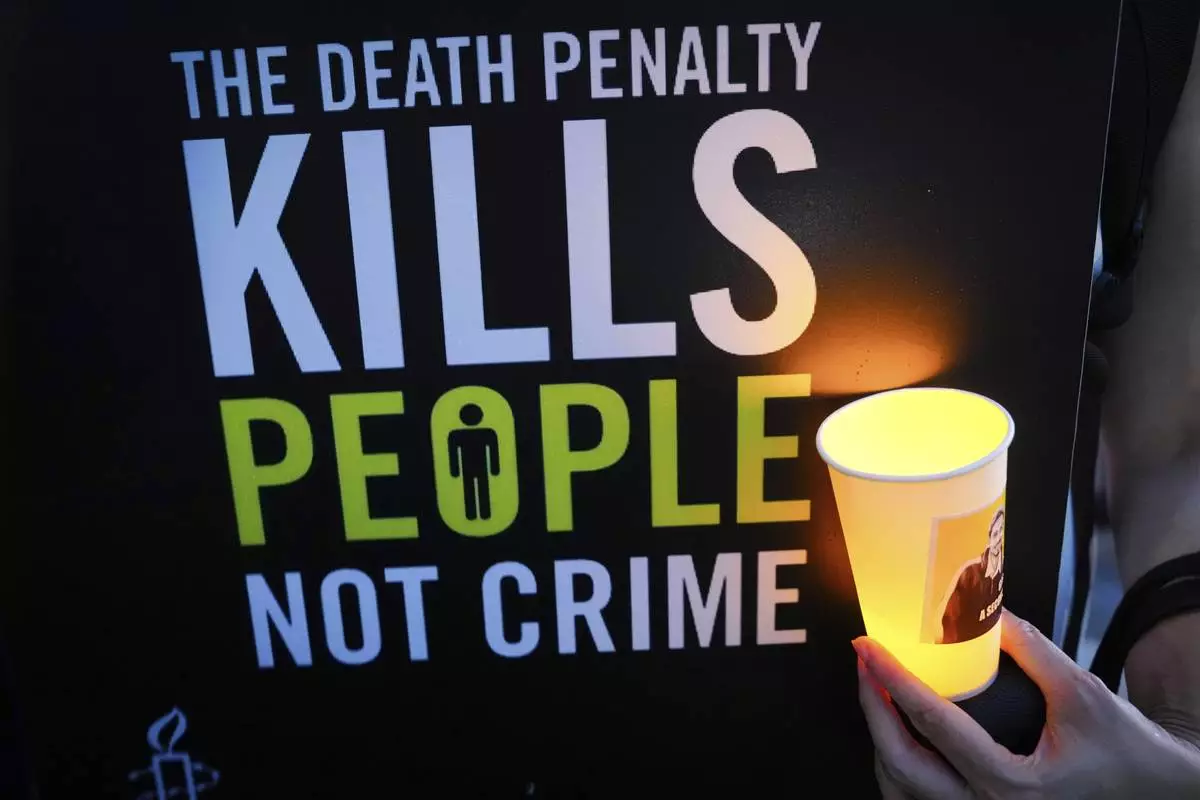
An activist holds a candle and a placard during a vigil against the impending execution of Malaysian national Pannir Selvam Pranthaman, sentenced to death for trafficking heroin into Singapore, outside the Singaporean embassy in Kuala Lumpur, Malaysia, Wednesday, Feb. 19, 2025. (AP Photo/Vincent Thian)

Activists holds a cross and a placard during a vigil against the impending execution of Malaysian national Pannir Selvam Pranthaman, sentenced to death for trafficking heroin into Singapore, outside the Singaporean embassy in Kuala Lumpur, Malaysia, Wednesday, Feb. 19, 2025. (AP Photo/Vincent Thian)
TEL AVIV, Israel (AP) — Israel has dramatically expanded its footprint in the Gaza Strip since relaunching its war against Hamas last month. It now controls more than 50% of the territory and is squeezing Palestinians into shrinking wedges of land.
The largest contiguous area the army controls is around the Gaza border, where the military has razed Palestinian homes, farmland and infrastructure to the point of uninhabitability, according to Israeli soldiers and rights groups. This military buffer zone has doubled in size in recent weeks.
Israel has depicted its tightening grip as a temporary necessity to pressure Hamas into releasing the remaining hostages taken during the Oct. 7, 2023, attack that started the war. But the land Israel holds, which includes a corridor that divides the territory's north from south, could be used for wielding long-term control, human rights groups and Gaza experts say.
Prime Minister Benjamin Netanyahu said last week that even after Hamas is defeated, Israel will keep security control in Gaza and push Palestinians to leave.
The demolition close to the Israeli border and the systematic expansion of the buffer zone has been going on since the war began 18 months ago, five Israeli soldiers told The Associated Press.
“They destroyed everything they could, they shot everything that looks functioning ... (the Palestinians) will have nothing to come back, they will not come back, never,” a soldier deployed with a tank squad guarding the demolition teams said. He and four other soldiers spoke to the AP on condition of anonymity for fear of reprisals.
A report documenting the accounts of soldiers who were in the buffer zone was released Monday by Breaking The Silence, an anti-occupation veterans group. A handful of soldiers -- including some who also spoke to AP -- described watching the army turn the zone into a vast wasteland.
“Through widespread, deliberate destruction, the military laid the groundwork for future Israeli control of the area,” said the group.
Asked about the soldiers’ accounts, the Israeli army said it is acting to protect its country and especially to improve security in southern communities devastated by the Oct. 7 attack, in which some 1,200 people were killed and 251 taken hostage. The army said it does not seek to harm civilians in Gaza, and that it abides by international law.
In the early days of the war, Israeli troops forced Palestinians from communities near the border and destroyed the land to create a buffer zone more than a kilometer (0.62 miles) deep, according to Breaking The Silence.
Its troops also seized a swath of land across Gaza known as the Netzarim Corridor that isolated the north, including Gaza City, from the rest of the narrow, coastal strip, home to more than 2 million people.
When Israel resumed the war last month, it doubled the size of the buffer zone, pushing it as far as 3 kilometers (1.8 miles) into Gaza in some places, according to a map issued by the military.
The buffer zone and the Netzarim Corridor make up at least 50% of the strip, said Yaakov Garb, a professor of environmental studies at Ben Gurion University, who has been examining Israeli-Palestinian land use patterns for decades.
Last week, Netanyahu said Israel intends to create another corridor that slices across southern Gaza, cutting off the city of Rafah from the rest of the territory. Israel’s control of Gaza is even greater taking into account areas where it recently ordered civilians to evacuate ahead of planned attacks.
Hundreds of thousands of Palestinians used to live in the land that now makes up Israel's buffer zone, an area that was key to Gaza's agricultural output.
Satellite images show once dense neighborhoods turned to rubble, as well as nearly a dozen new Israeli army outposts since the ceasefire ended.
When the ceasefire was announced in January, Nidal Alzaanin went back to his home in Beit Hanoun in northern Gaza. His property stood on the edge of the buffer zone and lay in ruins.
All that remains is a photo of him and his wife on their wedding day, a drawing of his son’s face on a porcelain plate and the carcass of a 150-year-old sycamore tree planted by his great-grandfather. His greenhouse was reduced to twisted scraps of metal.
The 55-year-old farmer pitched a tent in the rubble, hoping to rebuild his life. But when Israel resumed its campaign and seized his land, he was again uprooted.
“It took 20 years to build a house and within five minutes they destroyed all my dreams and my children’s dreams,” he said from Gaza City, where he now shelters.
Israel’s bombardment and ground offensives throughout the war have left vast swaths of Gaza’s cities and towns destroyed. But the razing of property inside the buffer zone has been more methodical and extensive, soldiers said.
The five soldiers who spoke to the AP said Israeli troops were ordered to destroy farmland, irrigation pipes, crops and trees as well as thousands of buildings, including residential and public structures, so that militants had nowhere to hide.
Several soldiers said their units demolished more buildings than they could count, including large industrial complexes. A soda factory was leveled, leaving shards of glass and solar panels strewn on the ground.
The soldiers said the buffer zone had no marked boundaries, but that Palestinians who entered were shot at.
The soldier with the tank squad said an armored bulldozer flattened land creating a “kill zone” and that anyone who came within 500 meters of the tanks would be shot, including women and children.
Visibly shaken, he said many of the soldiers acted out of vengeance for the Oct. 7 attack.
“I came there because they kill us and now we’re going to kill them. And I found out that we’re not only killing them. We’re killing them, we’re killing their wives, their children, their cats, their dogs, and we destroyed their houses,” he said.
The army said its attacks are based on intelligence and that it avoids “as much as possible, harm to non-combatants.”
It is unclear how long Israel intends to hold the buffer zone and other territory inside Gaza.
In announcing the new corridor across southern Gaza, Netanyahu said Israel aims to pressure Hamas to release the remaining 59 hostages, of whom 35 are believed dead. He also said the war can only end when Hamas is destroyed and its leaders leave Gaza, at which point Israel would take control of security in the territory.
Then, Netanyahu said, Israel would implement U.S. President Donald Trump’s call to move Palestinians from Gaza, what Israel calls “voluntary emigration.”
Some Israel analysts say the purpose of the buffer zone isn’t to occupy Gaza, but to secure it until Hamas is dismantled. “This is something that any sane country will do with regard to its borders when the state borders a hostile entity,” said Kobi Michael, a senior researcher at two Israeli think tanks, the Institute for National Security Studies and the Misgav Institute.
But rights group say forcibly displacing people is a potential war crime and crime against humanity. Within Gaza’s buffer zones, specifically, it amounts to “ethnic cleansing,” because it was clear people would never be allowed to return, said Nadia Hardman, a researcher at Human Rights Watch.
Israel called the accusations baseless and said it evacuates civilians from combat areas to protect them.
Associated Press reporter Michael Biesecker contributed from Washington.
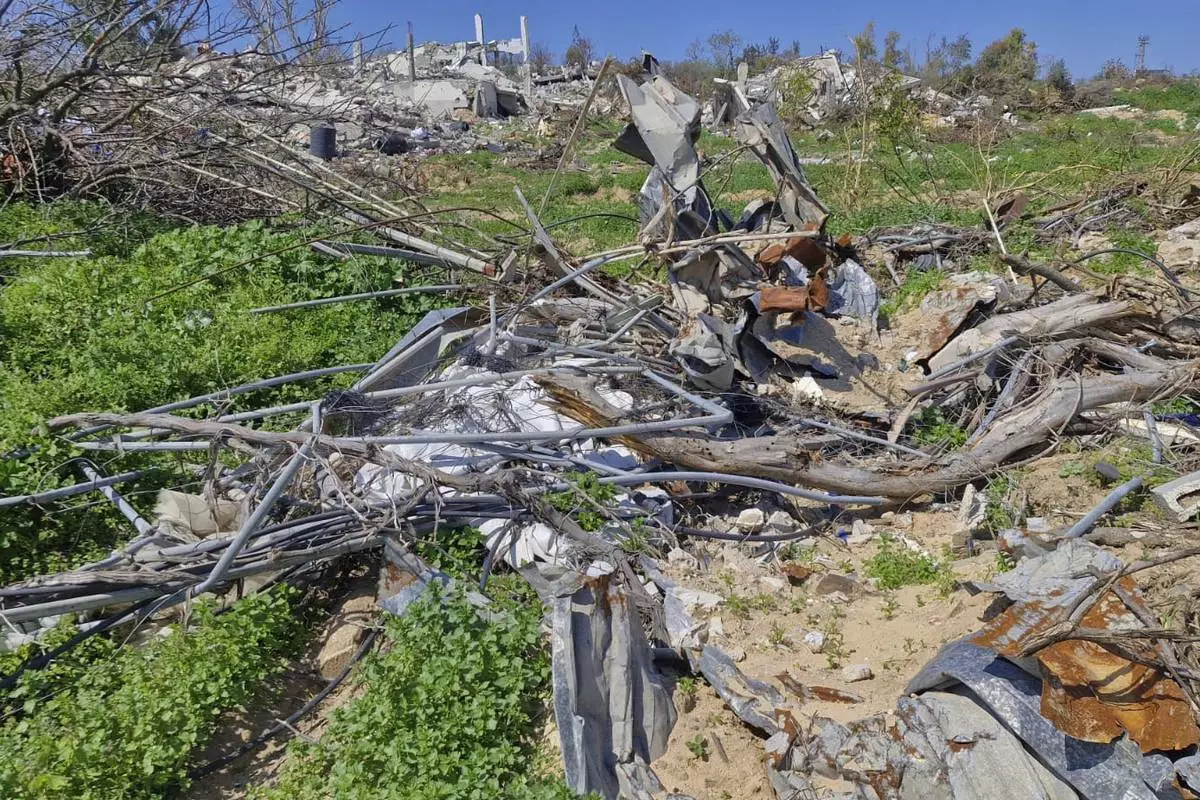
This photo provided by Palestinian Nidal Alzaanin, shows his destroyed greenhouse in Beit Hanoun, Gaza Strip, March, 2025. (AP Photo/Nidal Alzaanin)
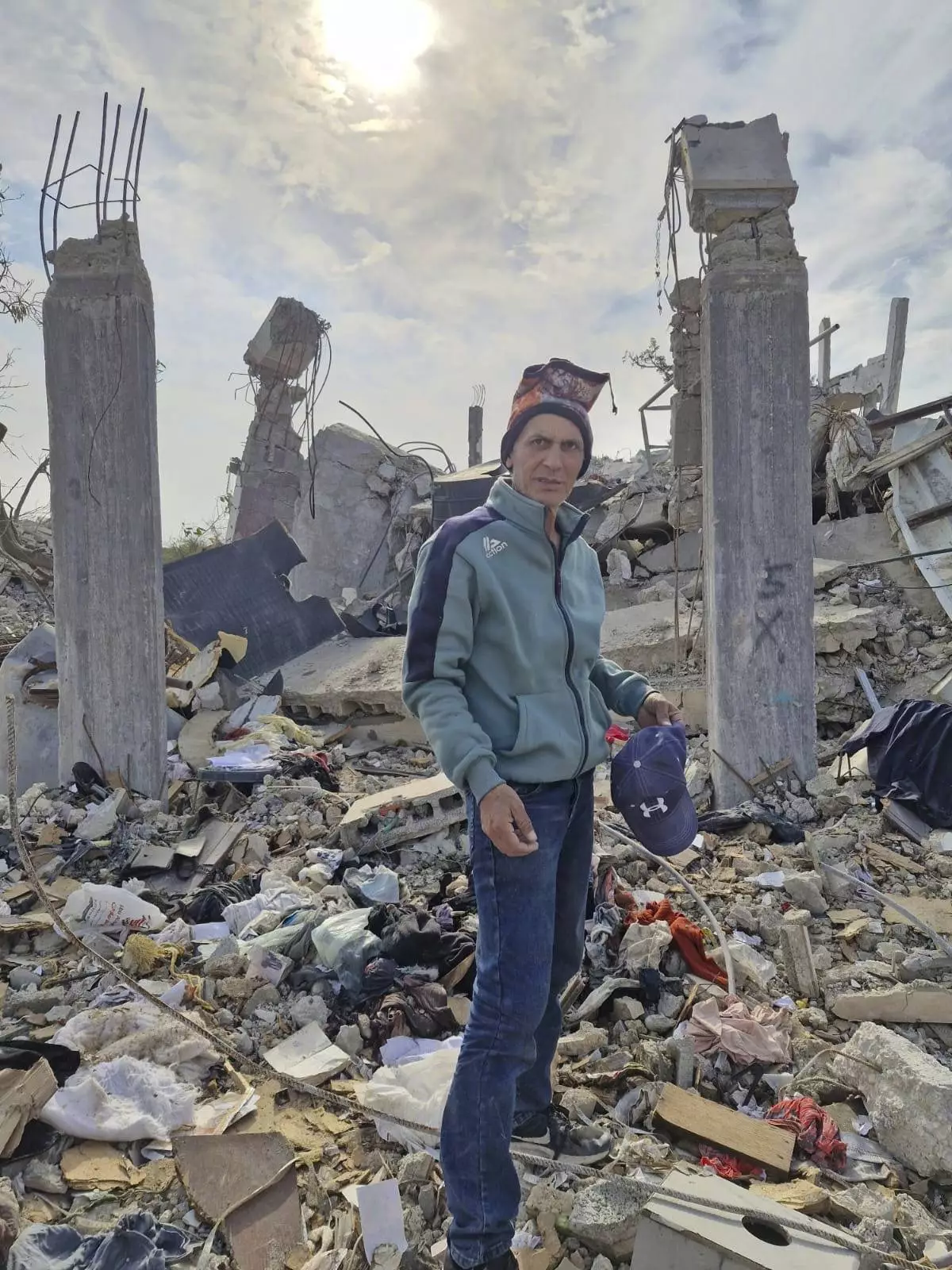
This photo provided by Palestinian Nidal Alzaanin, shows him standing in front of his demolished home in Beit Hanoun, Gaza Strip, March, 2025. (AP Photo)
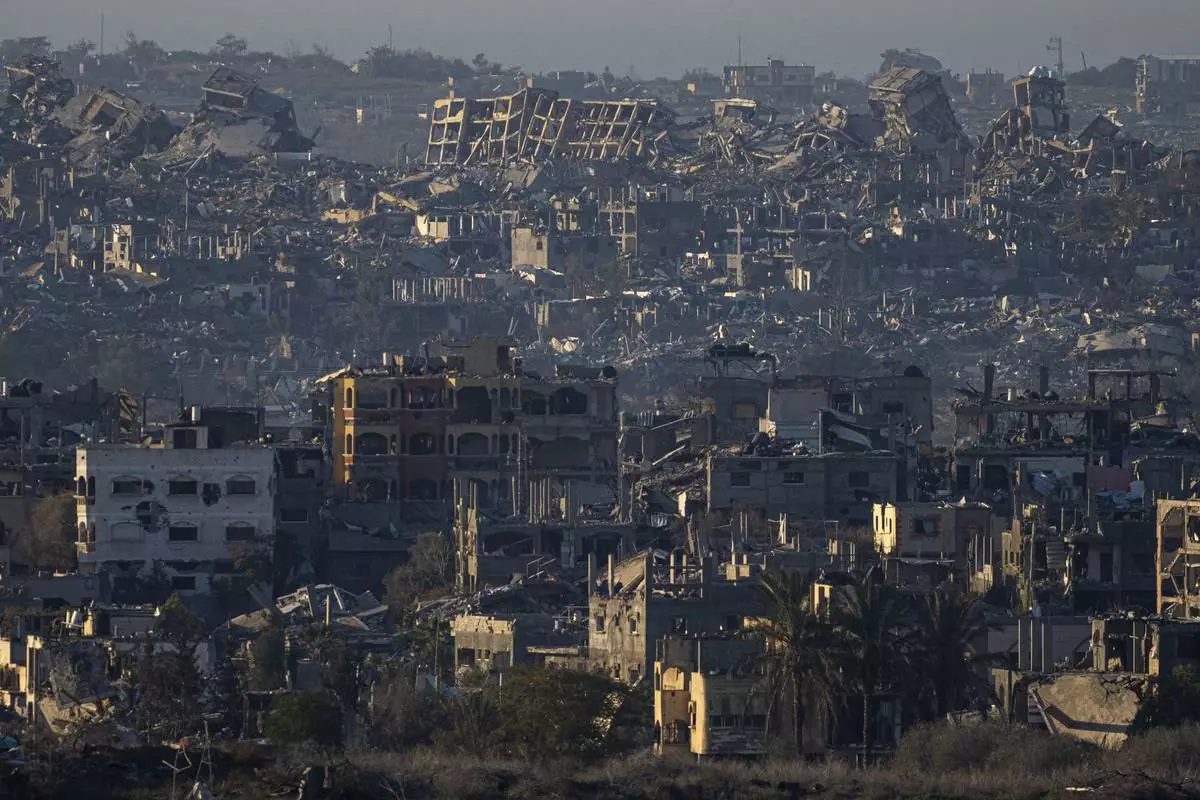
FILE - Destroyed buildings are seen inside the Gaza Strip from southern Israel, Jan. 13, 2025. (AP Photo/Ariel Schalit, File)
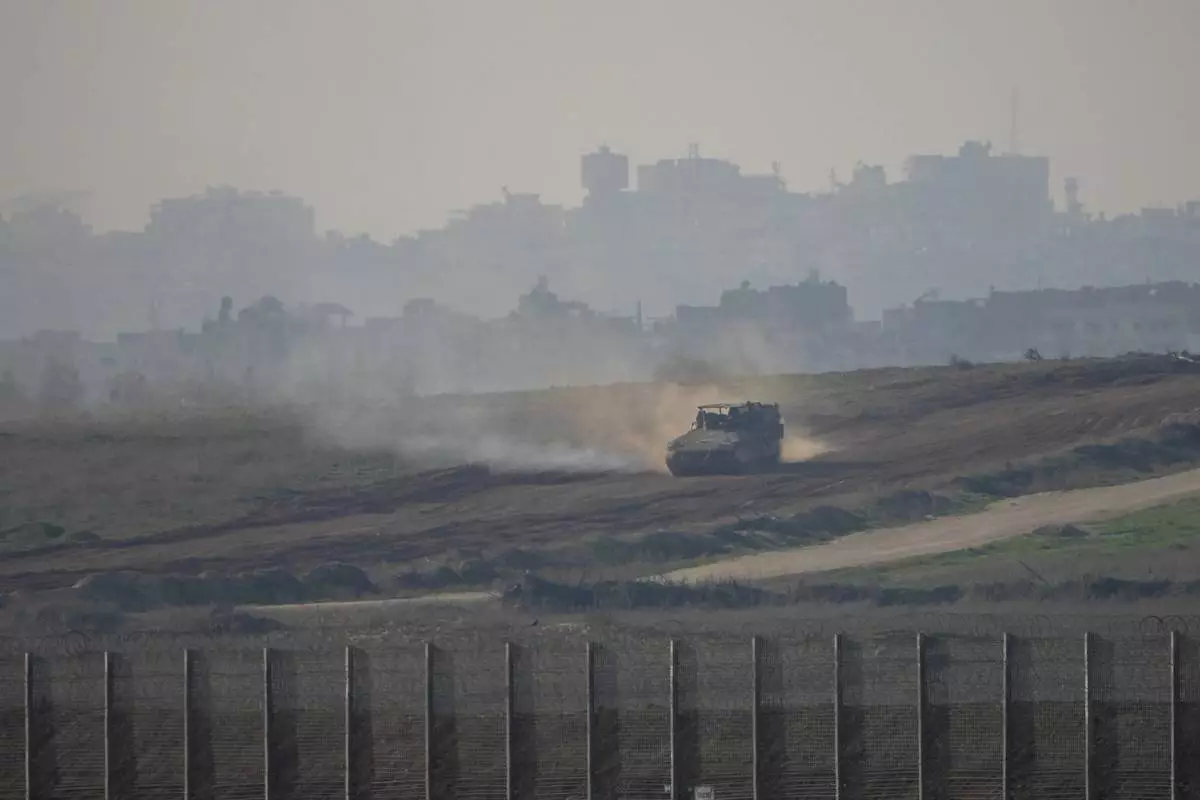
FILE - An Israeli army vehicle moves in the Gaza Strip as seen from southern Israel, Jan. 16, 2025. (AP Photo/Ariel Schalit, File)
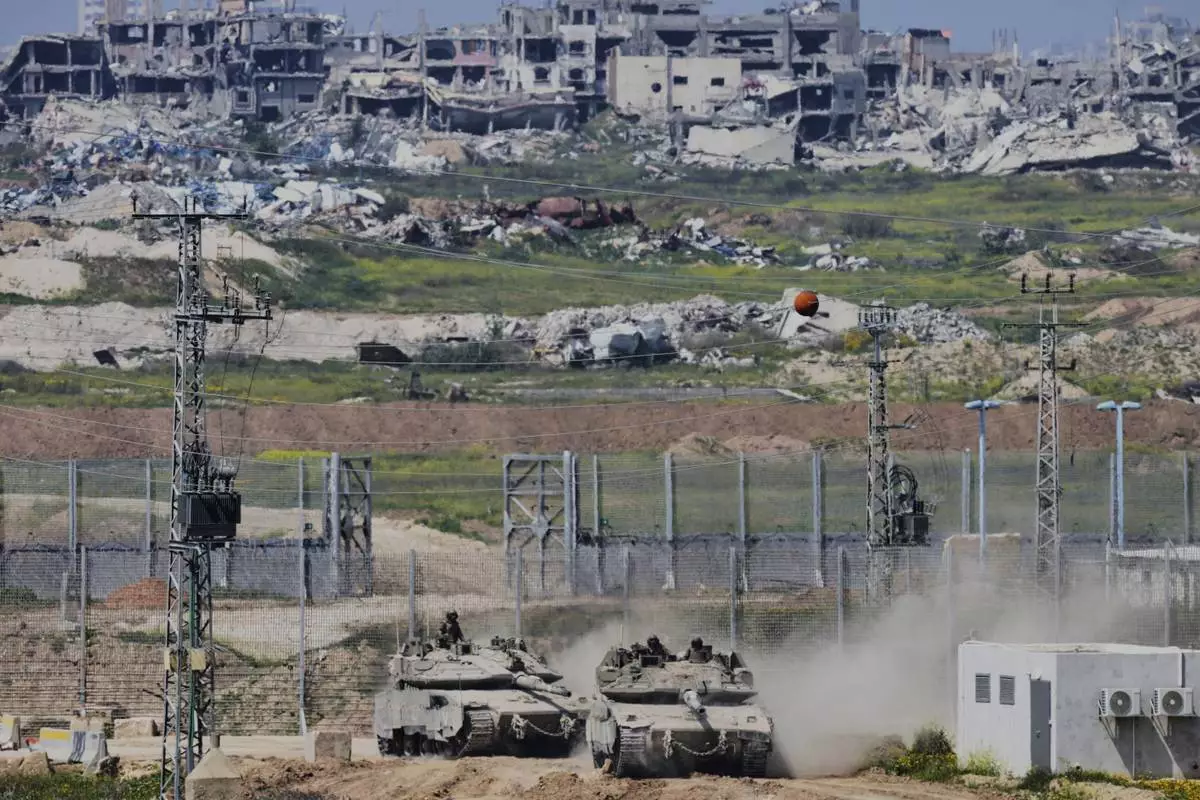
FILE - Israeli tanks maneuver along the border with north of the Gaza Strip, as seen from southern Israel, March 18, 2025. (AP Photo/Ohad Zwigenberg, File)
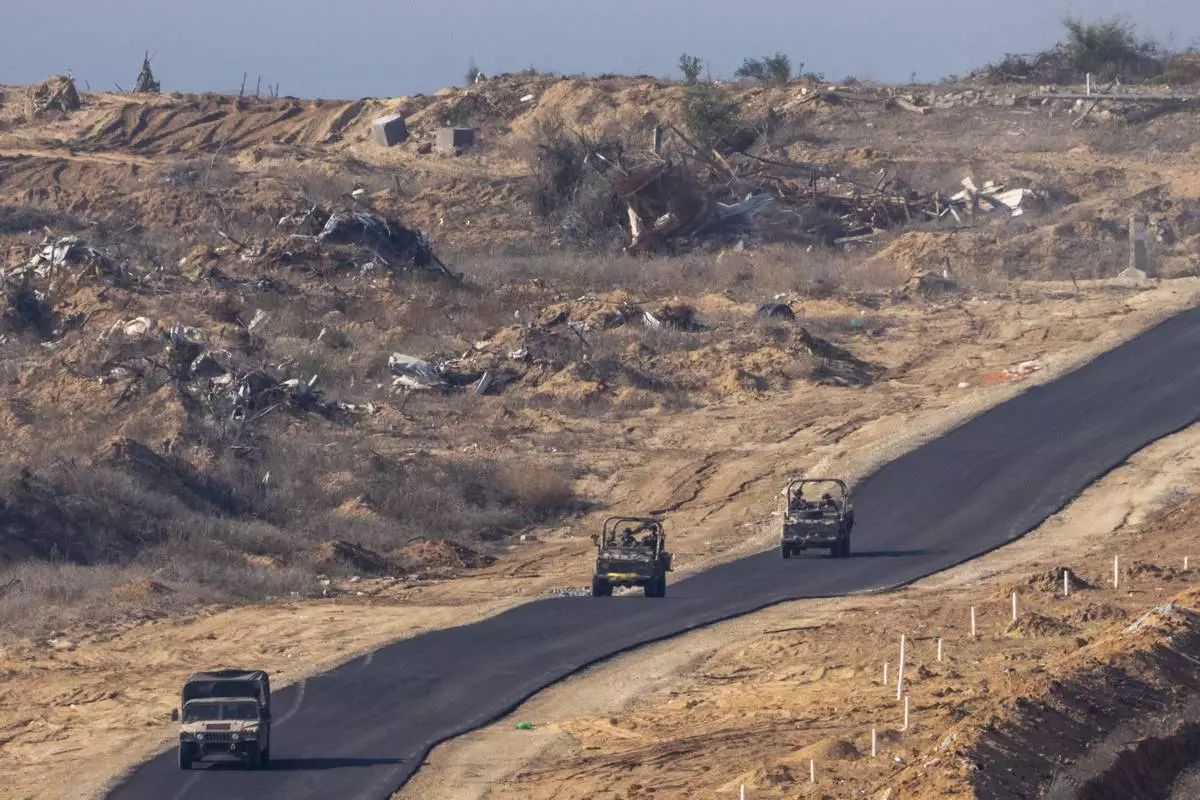
FILE - Israeli military vehicles move inside the Gaza Strip, as seen from southern Israel, Tuesday, Jan. 7, 2025. (AP Photo/Ariel Schalit, File)



















